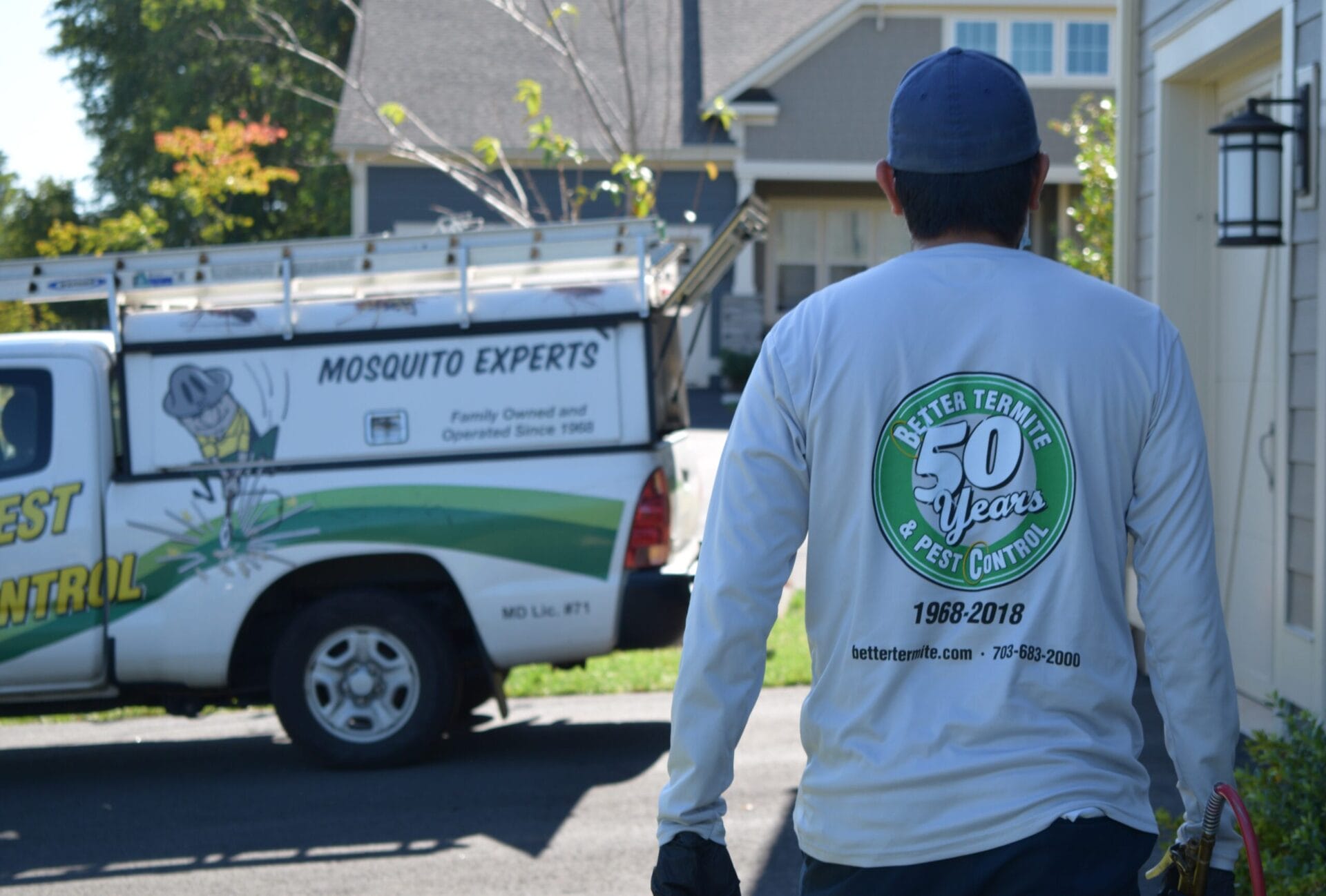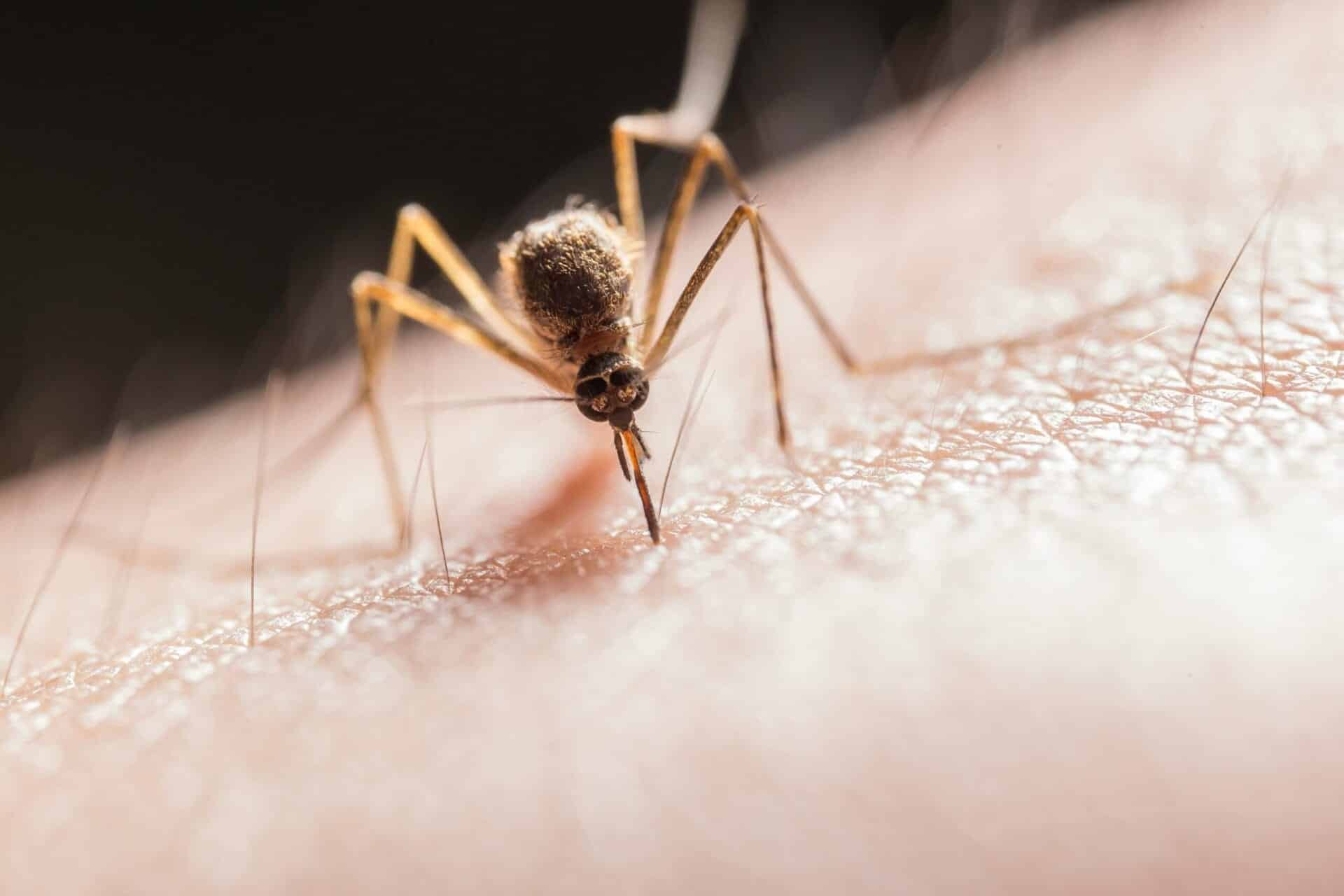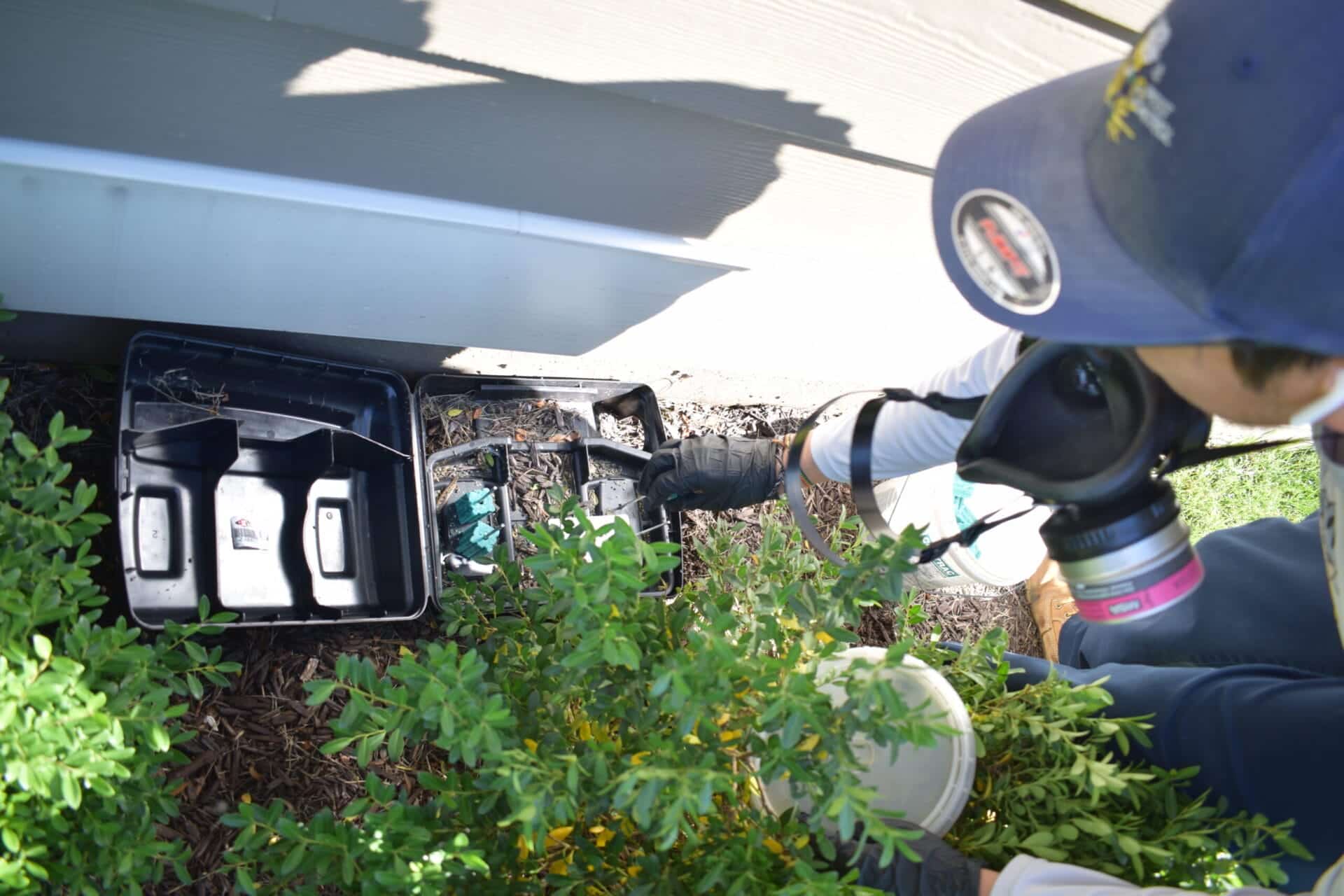


Quick Navigation
When homeowners in Virginia, Maryland, and Washington DC spot carpenter ant eggs, they’ve actually discovered something significant. These tiny, white specks reveal the location of the colony’s heart—the parent nest where the queen lives and reproduces.
Over the past four years as a registered technician with our family business, I’ve responded to countless spring calls from homeowners who first notice ant activity in their kitchens or bathrooms. During inspections, finding carpenter ant eggs or larvae in hidden nest sites has been crucial for confirming active colonies and targeting complete elimination.
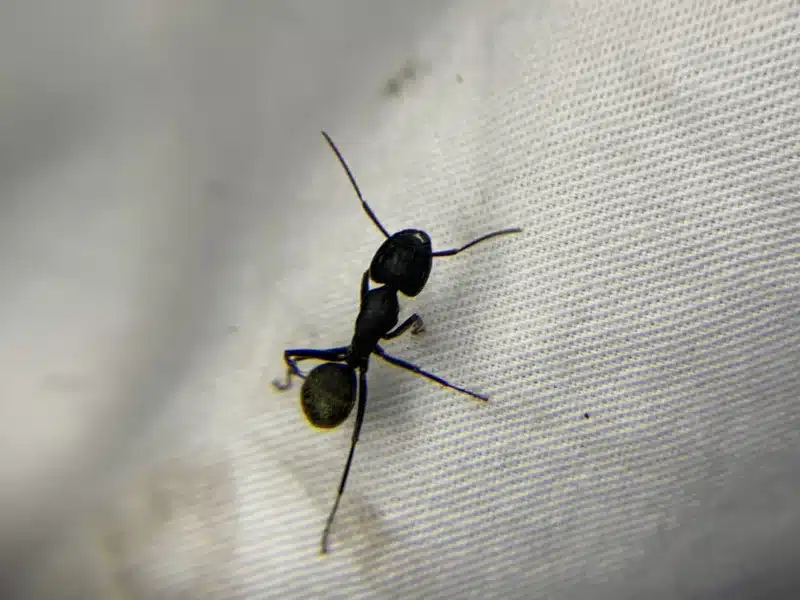
Because identifying carpenter ant eggs helps homeowners understand where these pests are actually breeding and developing, knowing what to look for can make the difference between surface-level treatment and true colony elimination.
Carpenter ant eggs are incredibly small—about 0.5 millimeters long, roughly the thickness of a credit card edge. They’re easy to mistake for grains of coarse sugar or salt scattered in dark spaces.
The eggs have an elongated, oval shape with slightly tapered ends and a completely smooth surface. When first laid, carpenter ant eggs appear translucent white or pearl-colored. As they develop and approach hatching, they become faintly cream-colored.
Workers in the colony constantly groom these eggs with secretions from their mandibles, making them sticky and causing them to clump together in small clusters. According to research from the Animal Diversity Web, carpenter ant eggs require 18 to 25 days to develop under optimal conditions.
🔍 Identification Tip: If you find tiny white specks that look like coarse sugar grains in damp wood areas, you’ve likely discovered carpenter ant eggs. Unlike termite eggs that are found in soil with mud carton, carpenter ant eggs appear in clean wood galleries and indicate you’ve found the parent nest with the queen.
Understanding nest architecture is crucial for locating carpenter ant eggs. These ants create two types of nests with very different purposes and contents.
The parent nest houses all carpenter ant eggs along with the queen and youngest larvae. This primary colony location requires high humidity—typically above 70%—which explains why it’s always found in damp, decayed wood.
Common parent nest locations include:
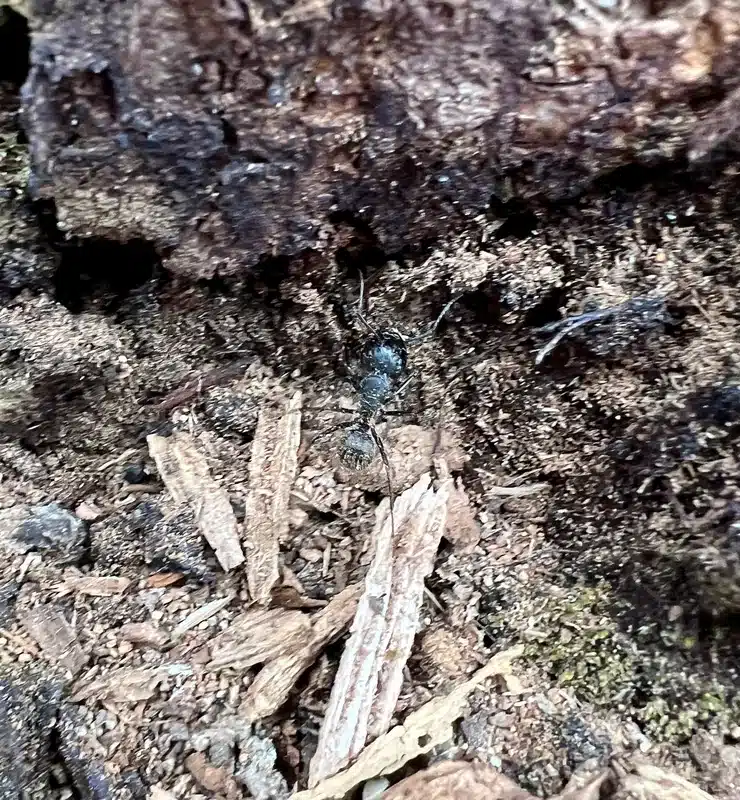
Satellite nests are completely different environments. These secondary locations are typically found in drier, warmer spaces like wall insulation, attics, or hollow doors. Satellite nests never contain carpenter ant eggs—they only house older larvae, pupae, and some winged reproductives.
This distinction is critical for effective treatment. As noted by Ohio State University Extension, locating eggs pinpoints the parent nest, which is the only site housing the queen and therefore the key target for total elimination.
A single queen in the parent nest produces all carpenter ant eggs for the entire colony. Her egg production surges dramatically during spring months—typically April through June in the Mid-Atlantic region—as colonies exit their winter dormancy period.
The queen can lay both fertilized and unfertilized eggs. Fertilized eggs develop into female workers or future queens, while unfertilized eggs become males. Interestingly, queens also produce “trophic” eggs that are never meant to hatch. Instead, these protein-rich eggs are fed to developing larvae during times of food scarcity.
When a new colony is first established, the founding queen lays approximately 20 eggs in her initial clutch. She must care for these eggs entirely on her own until the first workers emerge to help expand the colony.
The journey from carpenter ant eggs to adult workers follows a predictable timeline that varies with temperature and environmental conditions.
Under optimal conditions of 75-80°F, carpenter ant eggs develop for 18 to 25 days. However, cooler temperatures can extend this period significantly. Eggs laid in late summer may remain dormant through winter and not hatch until the following spring.
After hatching, larvae go through four distinct growth stages over 14 to 25 days. These larvae are completely helpless—they’re hook-shaped, immobile, and require constant feeding and care from worker ants.
The final transformation occurs during the pupal stage, which lasts approximately 25 days. Pupae start pearly-white and gradually darken as they approach emergence as adult ants.
From egg to adult worker, the complete development cycle takes about 60 days during optimal summer temperatures. However, this can extend to 6-10 months if environmental conditions cause developmental delays.
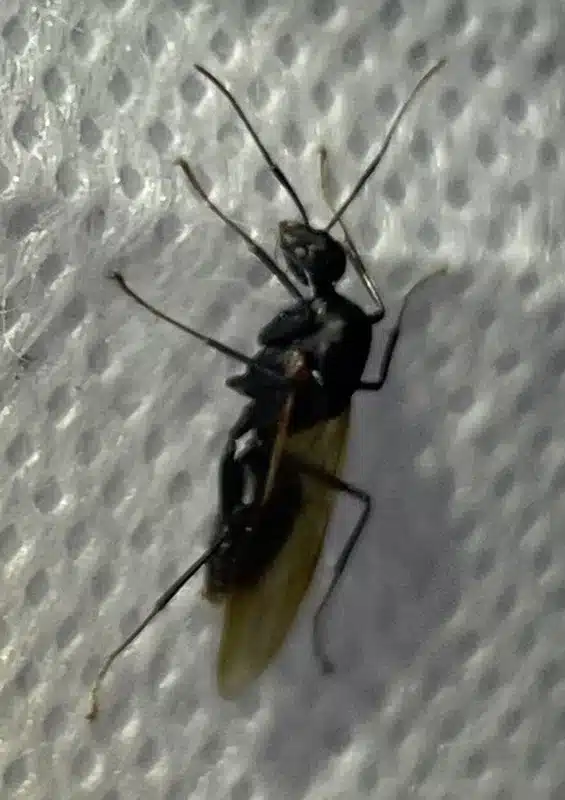
In Virginia, Maryland, and Washington DC, carpenter ant eggs are typically present from April through August. Peak egg-laying occurs during late spring when temperatures consistently reach the mid-70s and humidity levels rise.
Major swarming flights—when winged reproductives leave to start new colonies—occur during late May and June on warm evenings above 80°F with high humidity. These swarms indicate mature colonies that have been successfully producing eggs for several years.
According to Virginia Cooperative Extension, carpenter ant swarming behavior is directly linked to colony maturity and egg-laying capacity. Colonies typically require 3-6 years of successful egg production before producing reproductive winged ants. The timing of these flights corresponds to peak egg-laying periods, when environmental conditions of 80°F+ and high humidity create optimal conditions for both egg development and dispersal flights.
During winter months, egg production stops completely. Any late-season larvae remain in that developmental stage until spring warmth triggers continued growth.
Successful development of carpenter ant eggs depends on specific environmental conditions that explain their nest location preferences.
Temperature requirements are critical—optimal development occurs between 75-85°F. Temperatures above 90°F or below 60°F significantly slow or halt egg development entirely.
Humidity requirements are even more demanding. Carpenter ant eggs need relative humidity above 70% to prevent desiccation. This explains why parent nests are always found in moist environments and why satellite nests in dry attics never contain eggs.
Worker ants actively relocate eggs within gallery systems to find optimal micro-environments. This behavior becomes especially important during variable spring weather typical of the Mid-Atlantic coastal region.
Homeowners sometimes confuse carpenter ant eggs with those of other insects, particularly termites. Several key differences help with proper identification.
Carpenter ant eggs are larger than termite eggs—about 0.5mm compared to termites’ 0.3mm size. Carpenter ant eggs also have an elliptical shape, while termite eggs are nearly spherical.
Location provides another important clue. Carpenter ant eggs are found in piles inside wood galleries without any mud or carton material. Subterranean termite eggs cluster in moist carton nurseries in soil, accompanied by workers underground.
Additionally, those “ant eggs” sold in pet stores are actually pupae, not true eggs. This common misconception sometimes confuses homeowners trying to identify what they’ve found in their homes.
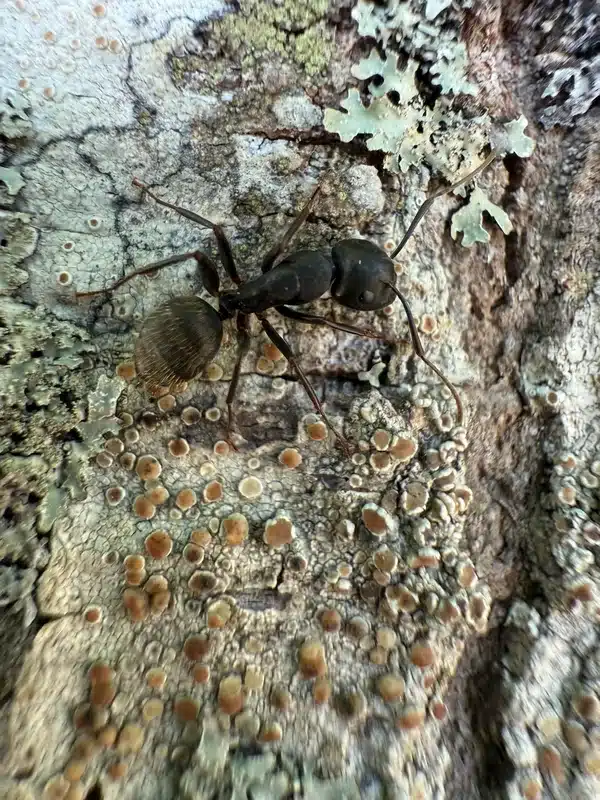
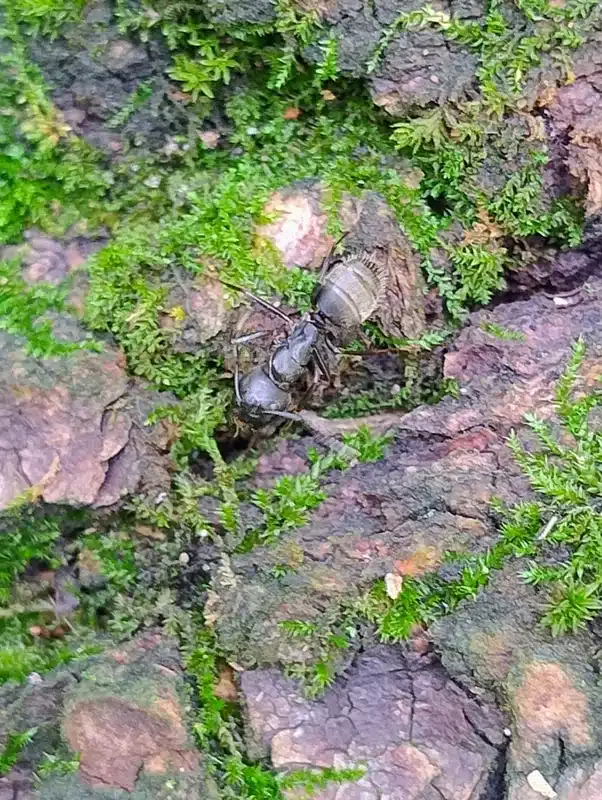
Discovering carpenter ant eggs provides crucial intelligence for complete colony elimination. Because eggs are only found in parent nests with the queen, finding eggs unequivocally identifies the primary target location.
Treating satellite nests alone leaves the queen alive and reproductive, guaranteeing colony rebound within months. However, successfully treating the parent nest where eggs are found ensures true elimination because it targets the colony’s reproductive center.
For professional treatment strategies, slow-acting baits work particularly well because foragers carry the toxicant back to the parent nest where it affects the queen and developing eggs. Observing the disappearance of eggs becomes a reliable marker that treatment has reached the reproductive core.
After treatment, the absence of fresh carpenter ant eggs and very young larvae 6-8 weeks later confirms successful colony elimination. However, the continued presence of eggs indicates a surviving queen or, in rare cases, a secondary queen in polygynous colonies.
This verification process has proven invaluable during my four years responding to carpenter ant calls. When treatments focus on locations where eggs are found, homeowners see lasting results rather than temporary relief.
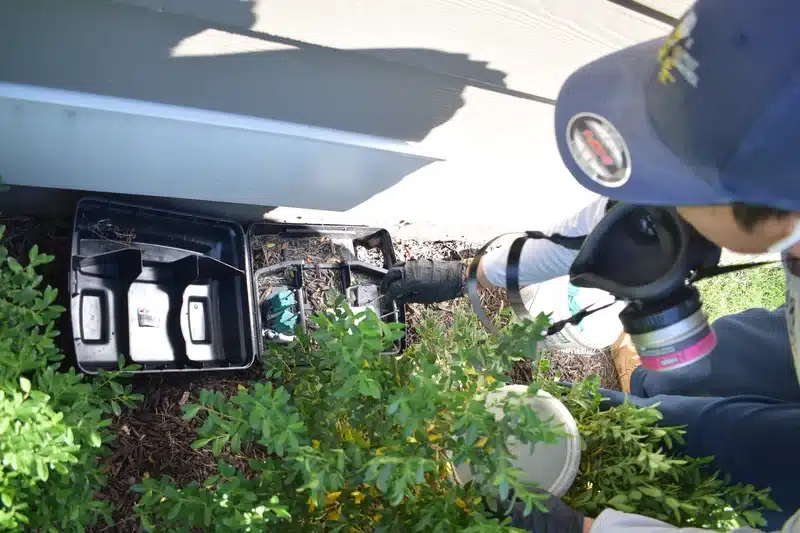
Our family business has served the DMV area for over 50 years, and we’ve learned that successful carpenter ant control requires targeting the egg-laying queen, not just visible workers.
We use a comprehensive approach that begins with thorough inspection to locate parent nests where carpenter ant eggs are found. Our registered technicians focus on moisture-damaged areas and use non-repellent treatments that allow foraging ants to carry materials back to the reproductive center.
Products in our program include specialized formulations that pass through our internal research team’s evaluation. We’ve removed 9 harsh chemicals common in our industry, choosing alternatives that we’d feel comfortable using in our own homes.
For homeowners dealing with ongoing carpenter ant issues, understanding the role of the queen and her egg-laying behavior helps explain why surface treatments often fail while targeted approaches succeed.
Preventing carpenter ant egg development starts with eliminating the moisture conditions that parent nests require. Key prevention strategies include:
Regular monitoring during spring months helps detect early egg-laying activity before colonies become well-established. Homeowners should listen for faint rustling sounds in walls during quiet evening hours and inspect moisture-prone areas for signs of ant activity.
Understanding early warning signs helps catch problems while colonies are still developing rather than after structural damage occurs.
If you’re finding carpenter ant eggs in your home or suspect these pests are establishing colonies in moisture-damaged areas, professional identification and treatment targeting the reproductive center ensures complete elimination. Our approach focuses on the locations where eggs develop, providing lasting results that protect your home’s structural integrity.
For questions about carpenter ant identification or to schedule an inspection, call us at 703-683-2000 or email info@bettertermite.com. Our registered technicians can help determine if you’re dealing with active egg-laying colonies and develop a targeted treatment plan.
Don’t wait until carpenter ants cause expensive structural damage. Get expert identification and a customized treatment plan that targets the egg-laying queen.
Carpenter ant eggs are tiny white or pearl-colored ovals about 0.5mm long—roughly the thickness of a credit card edge. They look like small grains of coarse sugar and often cluster together due to secretions from worker ants that make them sticky.
Carpenter ant eggs are only found in parent nests located in moist, decaying wood. Common locations include damp basement sill plates, wet roof sheathing, rotting window frames, and moisture-damaged floor joists. They’re never found in dry satellite nests in attics or wall voids.
Carpenter ant eggs typically develop for 18 to 25 days under optimal conditions of 75-80°F with high humidity. Cooler temperatures can extend this period significantly, and eggs laid in late summer may remain dormant through winter.
No, carpenter ant eggs are never found in satellite nests. These secondary locations in dry areas like attics only contain older larvae, pupae, and winged reproductives. Only the parent nest in moist wood contains eggs along with the queen.
Carpenter ant eggs are larger (0.5mm vs 0.3mm) and elliptical in shape, while termite eggs are smaller and nearly spherical. Carpenter ant eggs are found in wood galleries without mud, while termite eggs cluster in moist carton nurseries in soil.
Finding carpenter ant eggs identifies the parent nest location where the queen lives. This is the only site that must be treated for complete colony elimination. Treating satellite nests alone leaves the egg-laying queen alive, guaranteeing colony rebound.
Carpenter ant eggs are typically present from April through August in the Mid-Atlantic region, with peak egg-laying during late spring. No eggs are produced during winter months when colonies enter dormancy.
Carpenter ant eggs require temperatures between 75-85°F and relative humidity above 70% for successful development. These strict requirements explain why parent nests are always found in moist, decaying wood rather than dry locations.
Fresh carpenter ant eggs appear translucent white or pearl-colored and are constantly tended by worker ants. As they develop, they become faintly cream-colored just before hatching. Dried or abandoned eggs typically appear shriveled and darker.
While removing visible eggs provides temporary relief, it doesn’t eliminate the egg-laying queen. Professional treatment targeting the entire parent nest ensures complete colony elimination and prevents rebound activity within months.

With five years of hands-on experience in the pest control industry, George Schulz is a registered technician with the Virginia Pest Management Association and a proud third-generation professional in a family business that’s been protecting homes for over 57 years. He manages and trains a team of service pros while also leading internal research efforts—recently spearheading a deep-dive review of thousands of documents on pest control materials to hand-pick the most kid and pet friendly, most effective solutions tailored specifically for homes in the DC metro area. Read his bio.

